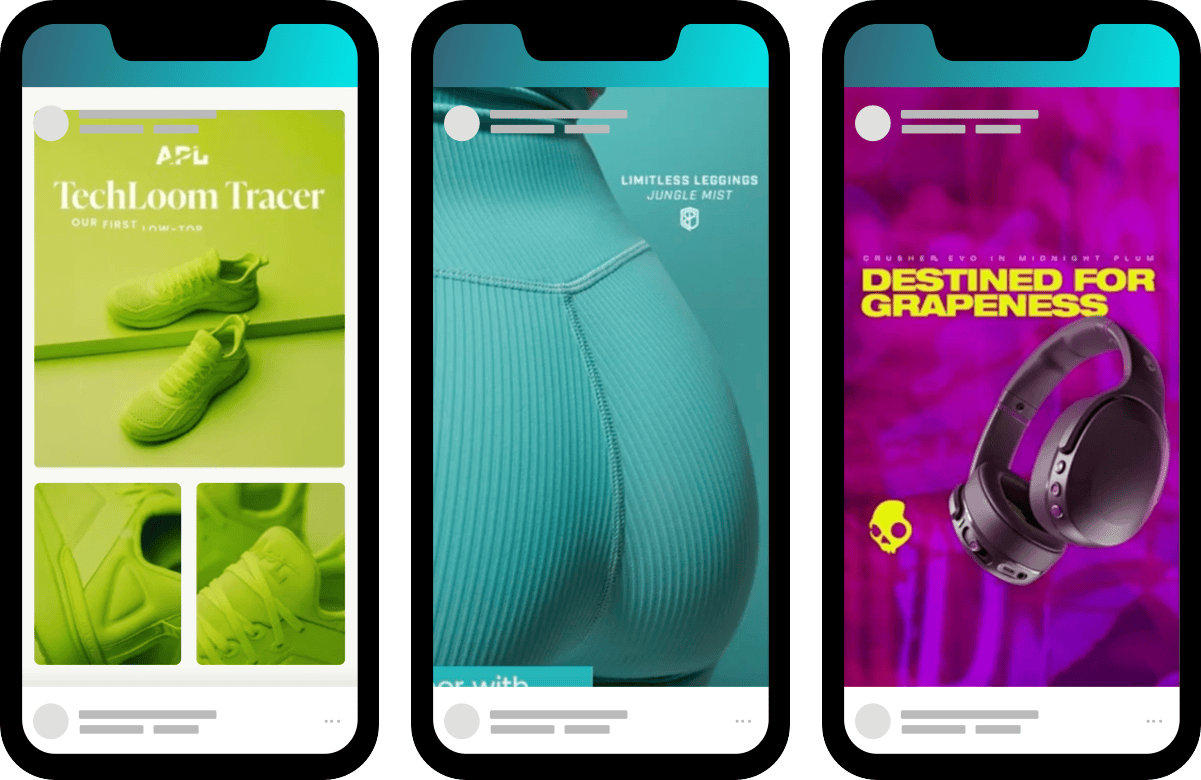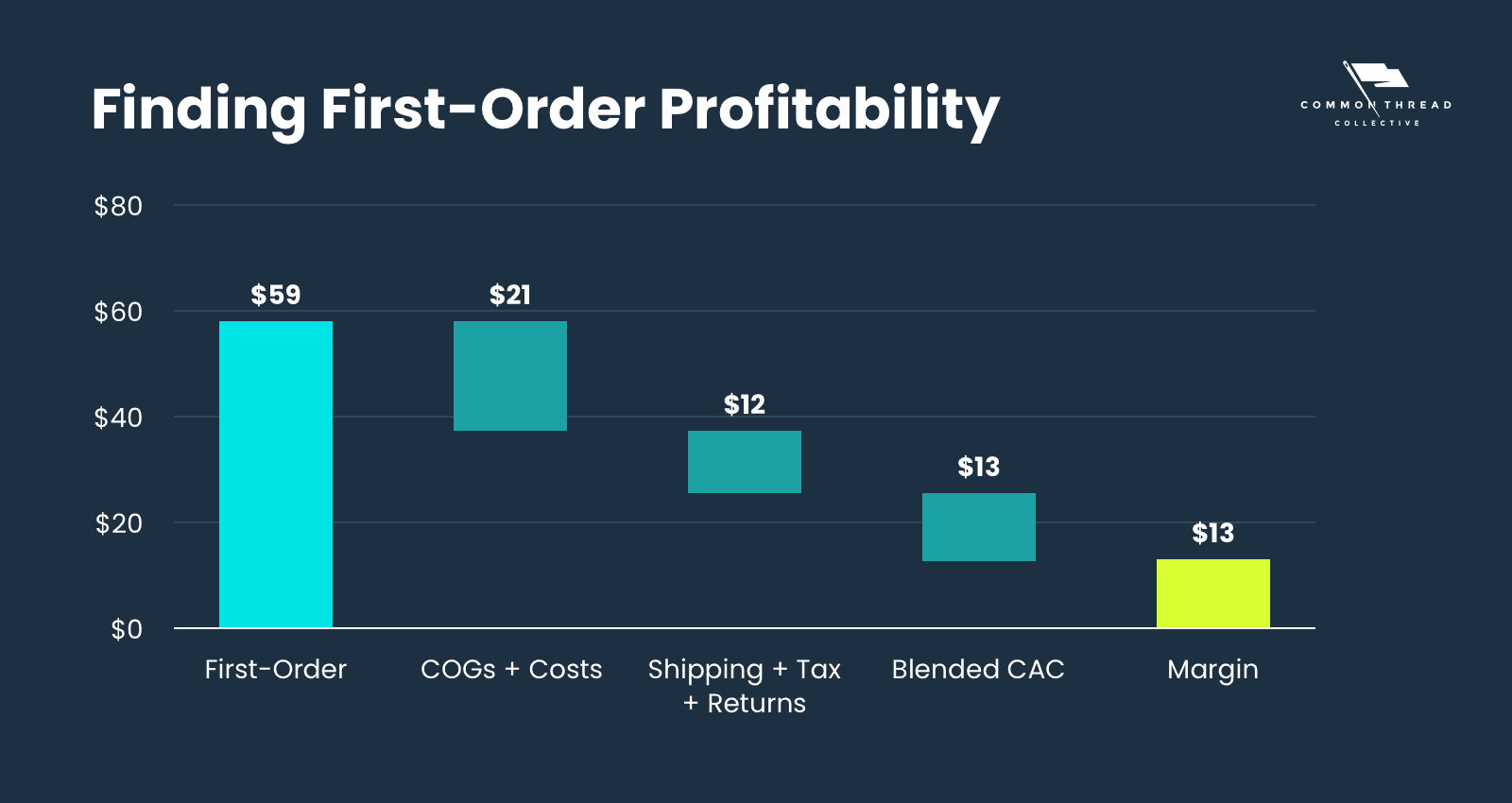Implement the Prophit System for Your Brand
We’ll work with you to custom-build CTC’s predictable, profitable growth system for your ecommerce business.
Get Started
Welcome to the future of marketing.
It's a place where the traditional boundaries between disciplines blur, where the lines between finance, operations, and creativity meld into a seamless whole.
In this brave new world, marketing isn't just about driving ROAS or achieving higher conversion rates … it's about merchandising, understanding the intricate dance between supply and demand, between financial metrics and creative vision.
Build an ad account your CFO will love.
A great ad account includes a consideration for creative, operations, and finance.
When a marketer focuses solely on achieving a high ROAS, the business might be left with an overstock of their highest margin SKUs, while selling out products that generate demand organically.
Your ad account needs to generate attention while also aligning with your business needs.
To get there, we will focus on …

This blog post is another in our “Bridges” series, which aims to bridge the gap between marketing and finance.
In today’s ecommerce landscape, the traditional boundaries between disciplines no longer apply, and it has become more vital than ever to bridge the gap between marketing, finance, and operations.
Let’s start by defining the idea of merchandising.
It’s not just about how the display of products is laid out. It’s about which products are being displayed.
It’s the planning for the realization of that product (demand planning.) It’s about understanding market trends and categories to think about what categories of products to bring to market.
What we will focus on today, is the idea of the retail window. Merchandising is the process of capturing the customer's attention in a compelling way that aligns with the business objective.
When we think of retail windows with beautiful displays, many of us think about big mall displays, but modern retail windows can’t be found inside a mall.
Your IG Feed is the new “window display.”
When we think about our ad account as a window display, we need to start thinking about merchandising that ad account … which is another way of saying “Build an ad account your CFO will love.” Because this is an ad account that will help make your business money.
We have talked previously about the importance of merchandising your ad account.
In the world of brick-and-mortar retail, merchandising is the process of …
When thinking of the Facebook and Instagram newsfeeds as the "store window" be thoughtful not only about creative presentation, but also whether the products we display are the products we actually want people to buy.
In the world of marketing, attention is everything.
Without attention, your message falls on deaf ears, your products go unnoticed, and your business flounders. But how do you capture attention in a crowded marketplace?
You do it by creating concepts that are not just attention-grabbing but also financially viable.
“If you’re going to sell a fire extinguisher, lead with the fire.”
— David Ogilvy
Start by defining a unique offer with a specific marginal outcome and a target audience. Then, craft a message that captures attention and leads to action.
You are not competing against your peers or competitors on social media. You’re competing against the cutest, most violent, sexiest, or most salacious images.
Visual equity and color are a great way to stand out in the feed.

The images in your feed aren’t necessarily tied to sales when we’re thinking about the attention step of our process. Even if a black SKU is your most popular product, a brightly colored SKU will do a better job of grabbing attention than the higher-selling black SKU.
Once you have captured attention, the next step is to ensure that your products are available to your customers.
This means not only having products in stock but also ensuring that they are easily accessible and ready for purchase.
You need to understand the importance of availability and develop a methodology that ensures products are always in stock and ready to be sold. This involves careful inventory management, strategic placement of products, and a deep understanding of customer behavior.
Nothing kills ad performance like running out of stock on your best SKU.
A simple weekly report displaying current SKU availability can prevent this from ever happening.
As a marketer, running out of inventory is your fault, not the operations fault.
If you have eyes into your inventory, you can make decisions about the allocations of spend to better map to the impact in your business’ demand planning.
This isn’t only about understanding where you are low in your SKU count, it’s also about understanding where you are over-stocked and under-delivering relative to your inventory position.
Your job as a marketer isn’t to maximize the ROAS in the ad account. Your job is to maximize the marginal value of every available unit.
Sometimes the best thing you can do for your business is to move the hard unit.
Allowance is a finance or accounting term that we’re going to use to represent an estimated future expense.
What is your “allowable” acquisition expense in each campaign?
It starts with a basic consideration, using something like a first-order waterfall chart. This visual helps to show what we're after, which is the ability to produce contribution margin.
You can do this on a per-order basis, or you can do this by looking at overall first-order revenue minus all of the actual dollar expenses to determine how many raw dollars of first-order contribution you're generating.
In the example below, we’re calculating overall (average) first-order revenue:

By separating your products into unique campaigns, you can control the margin you generate off of each product by adjusting your CAC targets within the campaign.
Consider how much future revenue you generate off your customers.
If your product has a high LTV, you might not need a large first-order margin.
Regardless of your LTV, we never recommend losing first-order profitability when defining a CAC target.
With these principles in mind, you can develop a unique approach to marketing that is both creative and financially sound.
Here’s our process for considering Attention, Availability, and Allowance in our ad accounts at Common Thread Collective:
Once the concept is defined, it becomes its own unique campaign within the ad account.
Each campaign has a specific expected order value based on the marginal outcome of the offer. This allows our marketer to accurately measure the effectiveness of each campaign and make adjustments as needed.
At scale, this approach ensures that the marketing efforts are always aligned with the overall business goals and objectives. Each campaign can be mapped to inventory on a weekly basis, allowing us to adjust CAC accordingly and constantly turn inventory into cash.
In today’s ecommerce landscape, the traditional boundaries between disciplines no longer apply.
Instead, marketers must become merchants, understanding the intricate dance between supply and demand, between financial metrics and creative vision.
Go beyond the numbers and the metrics, and think about the bigger picture.

We’ll work with you to custom-build CTC’s predictable, profitable growth system for your ecommerce business.
Get StartedCommon Thread Collective is the leading source of strategy and insight serving DTC ecommerce businesses. From agency services to educational resources for eccomerce leaders and marketers, CTC is committed to helping you do your job better.
For more content like this, sign up for our newsletter, listen to our podcast, or follow us on YouTube or Twitter.